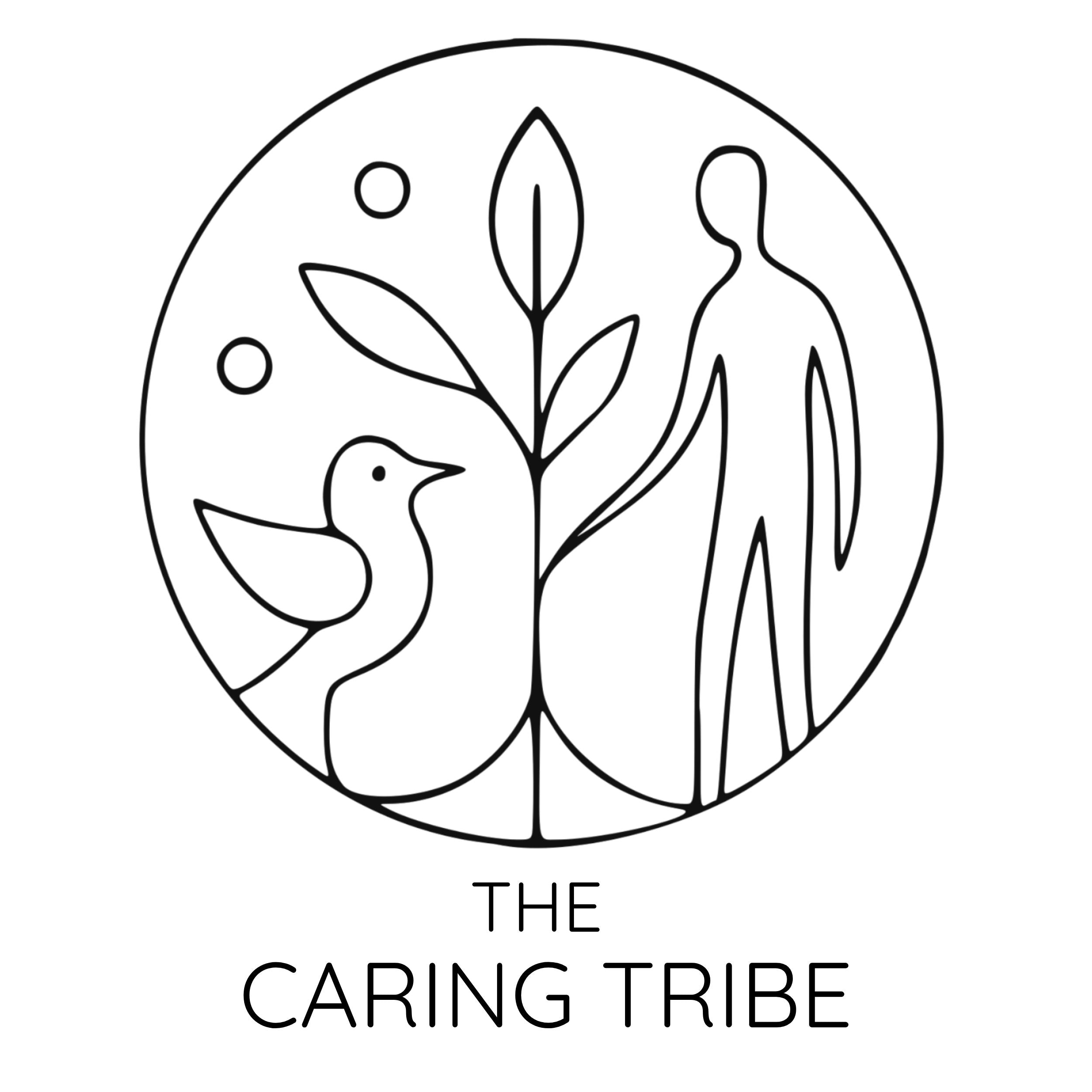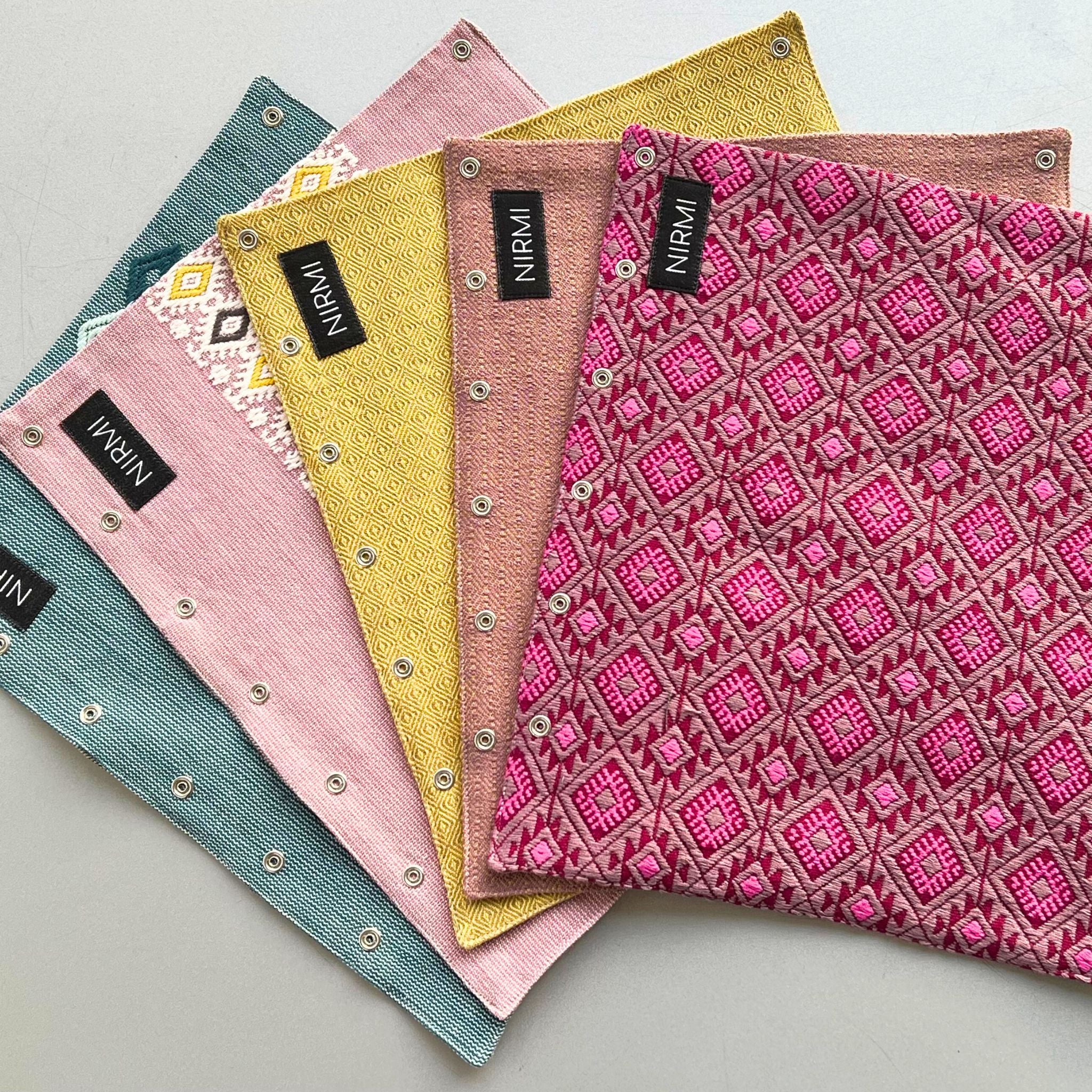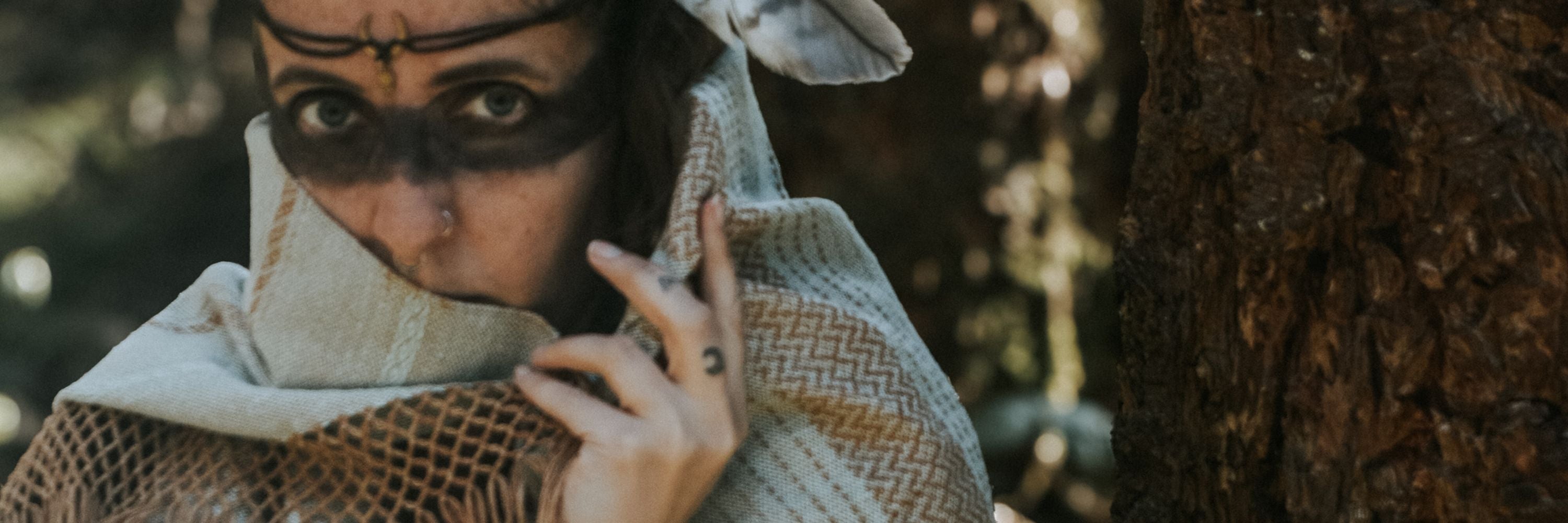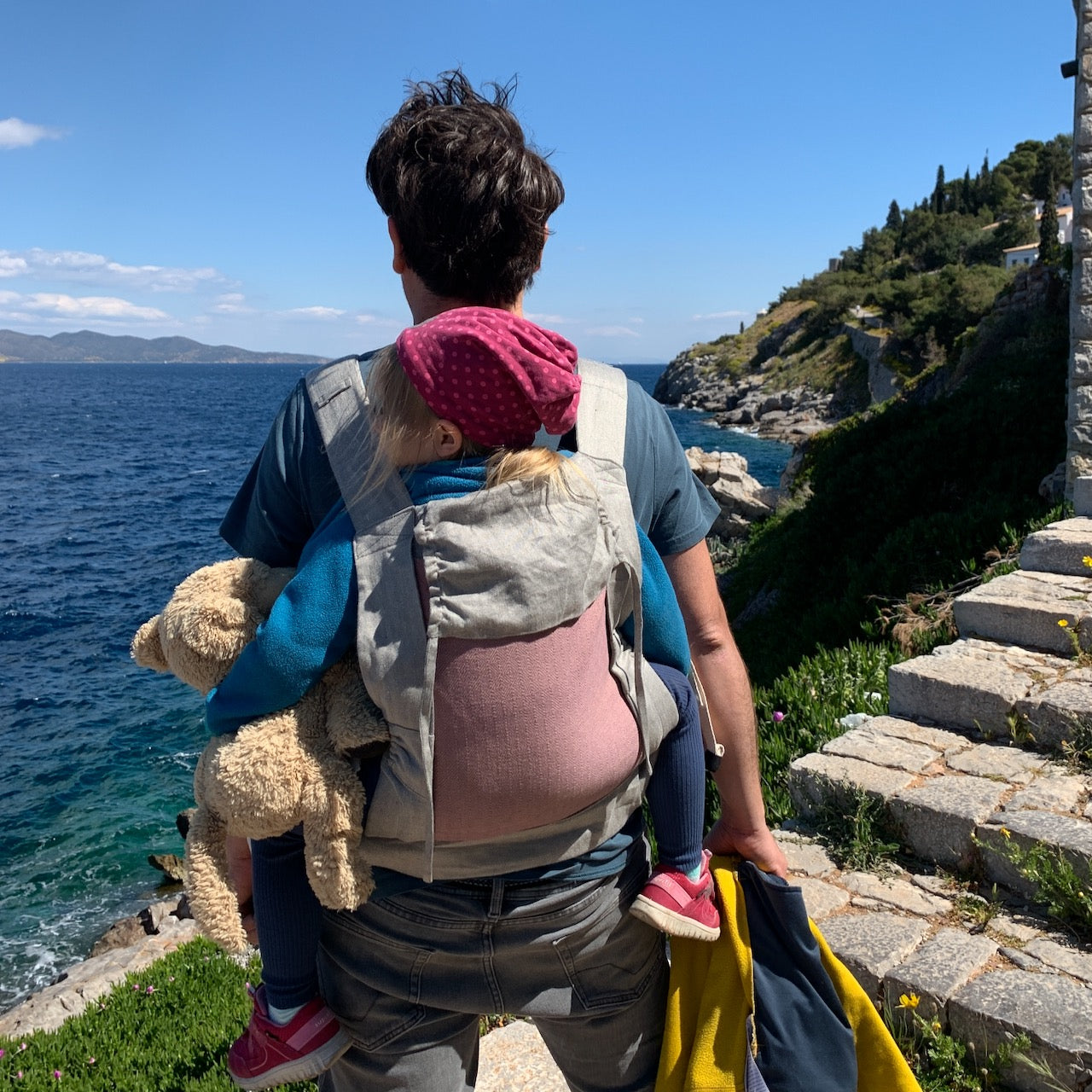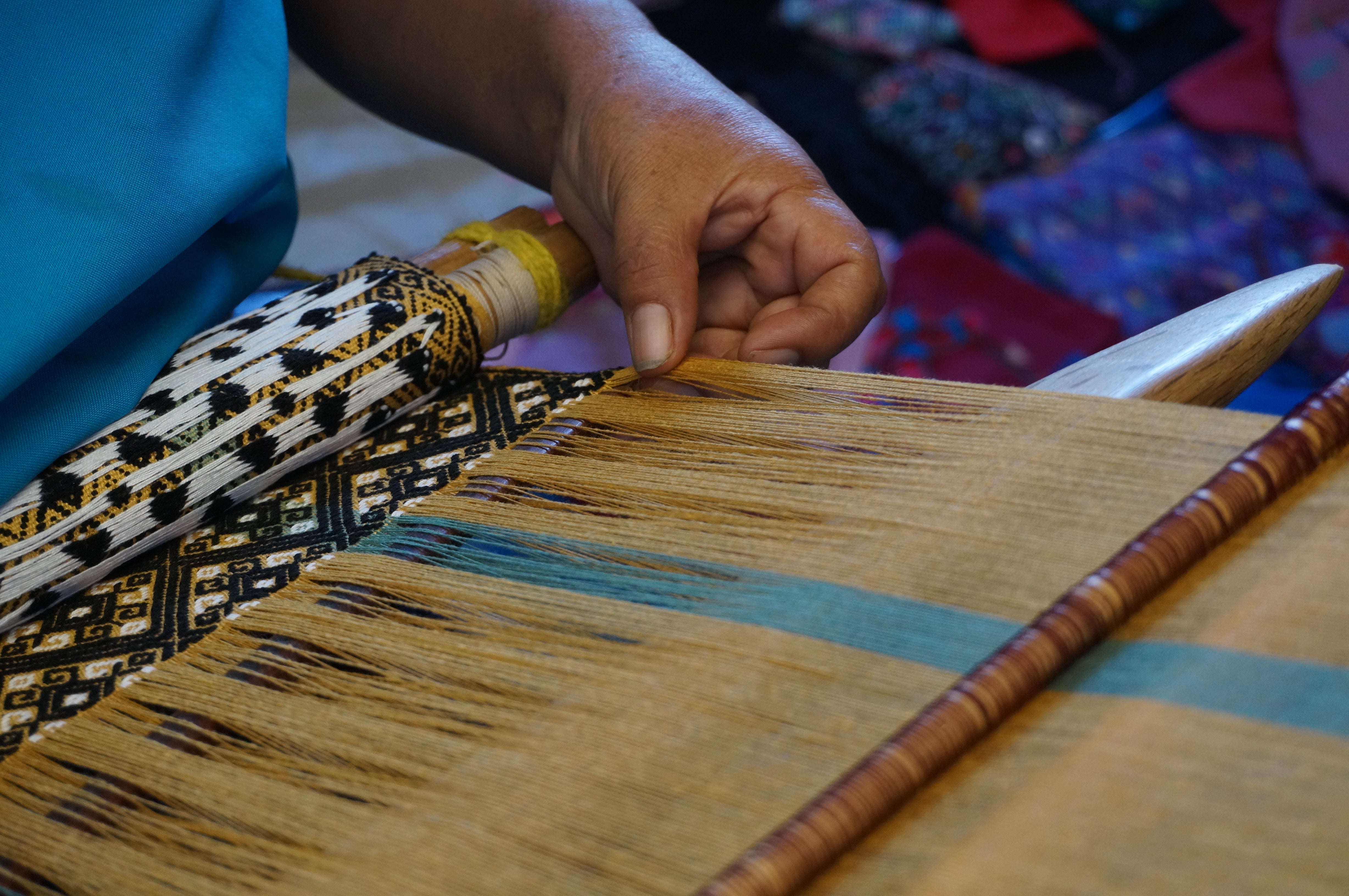
Mayan brocade: the slow-fashion art NIRMI makes wearable
In this blog post we feature a special slow-fashion textile art that through our Impact Patches we make wearable for you: the Mayan brocade. Please sit back and take some time for Rosa's story.

Rosa lives in Aldama, a Mayan village at an altitude of almost 2000m in southern Mexico. The next larger town is several hours' drive away on small, winding country roads. Rosa weaves on a traditional backstrap loom used by her ancestors for many centuries. Originally women were weaving for personal use. For example to make their traditional Huipil Blouse. For a few years and thanks to the efforts of the local NGO Impacto, some of the women from Aldama have formed a group of weavers called “Luchetik”. Thus they can jointly take on commissioned work for slow fashion brands.
The backstraop loom - a thousands of years old Slow-Tech - used not only in Mexico
Rosa weaves on a traditional backstrap loom weaving device. It consists of sticks, ropes and a strap. One end of the loom is attached to a pole or tree, and the other end is wrapped around the lower waist, allowing Rosa to control the tension on the loom with her own weight. Thanks to this simple technology, the weaving hip device can be easily taken along and used almost anywhere. The width of the device corresponds approximately to the width of the waist and also determines the maximum width of the woven pieces (approx. 50-70cm). The length of the woven pieces, on the other hand, is hardly longer than 250cm, since even with this length a large seat distance to the fastening post is required.
Similar weaving devices - as archaeological evidence proves- were common in large parts of the world and are still used today by indigenous groups in several countries around the world. The trail leads from India, Southeast Asia (Myanmar, Vietnam), East Asia (China, Japan), North America (Mexico), Central America (Guatemala) to South America (Peru, Bolivia). Seen in this way, the backstrap loom is also a testimony of the settlement of America from East Asia, which took place at the end of the last ice age.
 Backstrap loom in the Philippines (Fotocredit: T'nalak waver www.wayph.com)
Backstrap loom in the Philippines (Fotocredit: T'nalak waver www.wayph.com)
Ancestral knowledge
Rosa can create fabrics from spun cotton threads by hand, entirely without electricity, only through the knowledge passed down from generation to generation. After lengthy preparation, during which the cotton threads are wound up by hand and mounted on the weaving machine, the actual weaving can begin. The weft thread is wound around the lengthways wound warp threads (mustard and turquoise) once under and once over the warp threads. This back and forth is called plain weave. What is special about the weaving technique of the Tzotzil communities in the highlands of Chiapas is that additional threads are woven in at the same time as the "conventional" weaving in plain weave. This textile technique, in which extra weft threads are incorporated, is called "brocado" or "brocade". Gradually, artistic patterns from the Mayan culture are created using the brocade technique, which are passed on from generation to generation.

Rosa incorporates white and black threads into a Mayan mythological “rhombus” diamond pattern, typical of the work of the Aldama community. The rhombus is a central symbol from the historic Maya mythology and is associated with the 4 cardinal points. Rosa has an idea of the pattern in her mind and she can create the pattern by counting the warp strands with her fingertips and threading them skillfully while she weaves the rest of the fabric.
Mass production - not here
What makes weaving on the backstap loom a real slow fashion art is the fact that the weaving speed and the amount of work always remain constant. Whether 50cm or 250cm, the longer winding does not make weaving longer pieces much faster. Only the pedal loom and above all the machine-operated jacquard loom invented in 1805 and its successors made possible what is overwhelming us today: mass production. It makes producing many yards of fabric much cheaper than producing just a few yards.
The art of brocade requires great skill and concentration. Therefore, weaving is done for a maximum of 3-4 hours a day. For a piece of weaving approx. 1m long, Rosa needs a total of approx. 40-50 hours spread over several weeks. Because her slow-fashion textile art is only part of her everyday life.
Weaving as a part of a slow life
Weaving is just a part of Rosa's life. Rosa practices subsistence farming. That means she provides for her family with the fruit that grows in her garden and the corn that she harvests in her field and processes into tortillas.

In between, like many other women, she does care work. She takes care of her babies and toddlers, as well as older members of the community. During this work, the babies are always present in the self-woven Rebozo wrap.

Here is a photo of a weaver from another Mayan community, San Juan Cancuc.
By the way: did you know that the first wraps that were woven in Germany in the 1970s were inspired by these self-woven rebozos from Mexico? But that's another story though...
Rosa earns her own money by selling her woven pieces to slow-fashion labels like NIRMI, who buy her art at fair prices set by Rosa herself. This means that she is not financially dependent on her husband to buy medicine or school supplies for her family, for example, or to save money for emergencies

Would you like your children to live in a world where there is more slow fashion and less but fair and mindful consumption? Support Rosa and use her story as inspiration. What can we learn from indigenous groups who live in harmony with their environment, whose habitat and knowledge we threaten through our consumption? Be part of the slow textile movement!
